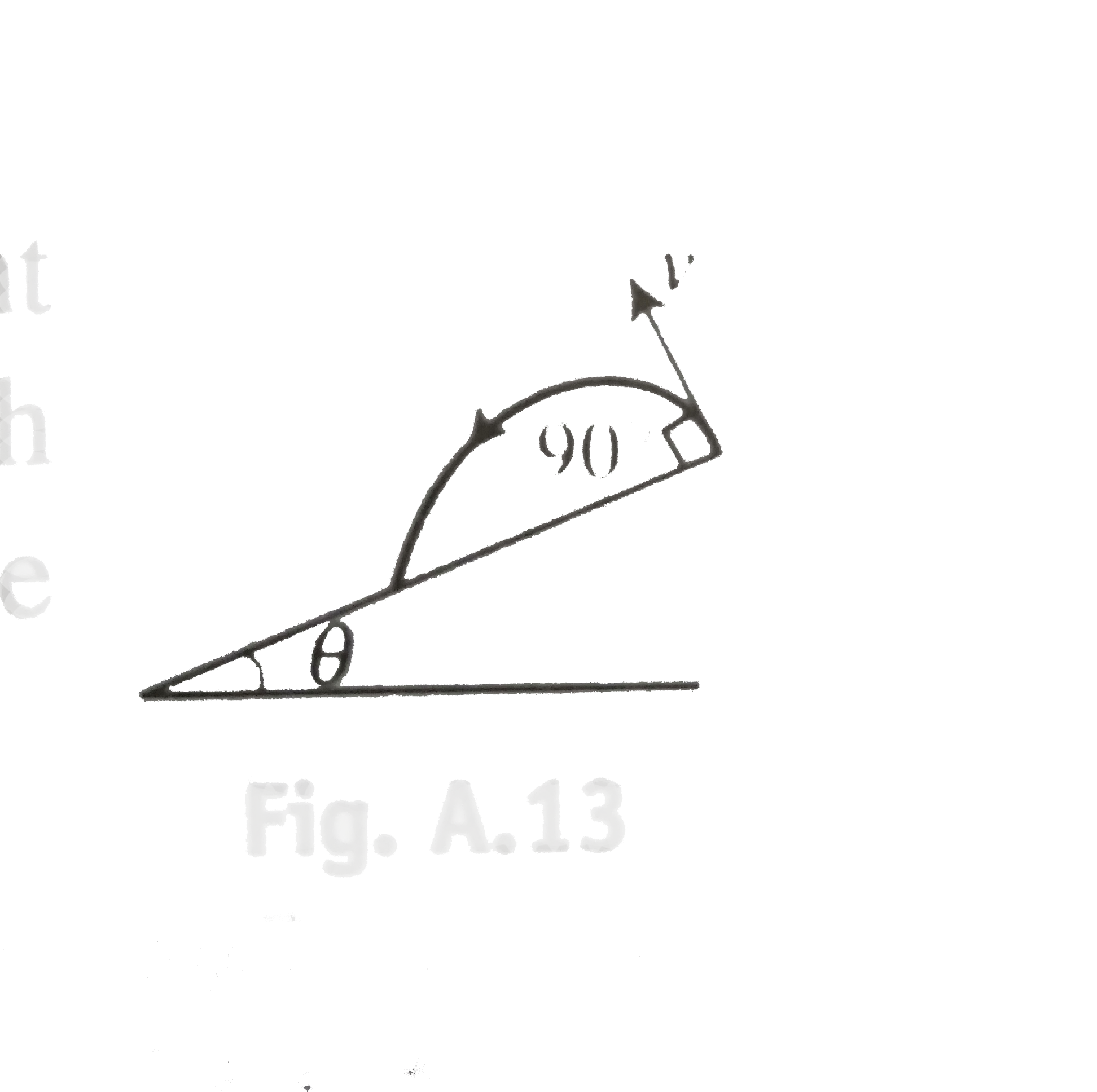A projectile is fired from the origin with a velocity v0 at an angle θ with x-axis. The speed of the projectile at an altitude h is .
a)v0cosθ
b)√v20−2gh
c)√v20sin2θ−2gh
d)None of these
The correct Answer is:B
To find the speed of a projectile at a certain altitude h, we can use the principle of conservation of mechanical energy. Here’s a step-by-step solution:
Step 1: Identify the initial conditions
- The projectile is fired from the origin (0,0) with an initial velocity v0 at an angle θ with the x-axis.
Step 2: Write down the initial energy
- At the initial point (point O), the potential energy (PE) is 0 (since it is at ground level) and the kinetic energy (KE) is given by:
KE0=12mv20
- Therefore, the total mechanical energy at point O is:
E0=PE0+KE0=0+12mv20=12mv20
Step 3: Write down the energy at height h
- At the height h (point A), the potential energy is:
PEA=mgh
- The kinetic energy at this point (with speed v) is:
KEA=12mv2
- Therefore, the total mechanical energy at point A is:
EA=PEA+KEA=mgh+12mv2
Step 4: Apply the conservation of energy principle
- According to the conservation of mechanical energy:
E0=EA
- Substituting the expressions for E0 and EA:
12mv20=mgh+12mv2
Step 5: Simplify the equation
- Cancel the mass m from both sides (assuming m≠0):
12v20=gh+12v2
- Rearranging gives:
12v2=12v20−gh
- Multiplying through by 2:
v2=v20−2gh
Step 6: Solve for v
- Taking the square root of both sides:
v=√v20−2gh
Conclusion
The speed of the projectile at an altitude h is given by:
v=√v20−2gh
- The projectile is fired from the origin (0,0) with an initial velocity v0 at an angle θ with the x-axis.
- At the initial point (point O), the potential energy (PE) is 0 (since it is at ground level) and the kinetic energy (KE) is given by:
KE0=12mv20
- Therefore, the total mechanical energy at point O is:
E0=PE0+KE0=0+12mv20=12mv20
- At the height h (point A), the potential energy is:
PEA=mgh
- The kinetic energy at this point (with speed v) is:
KEA=12mv2
- Therefore, the total mechanical energy at point A is:
EA=PEA+KEA=mgh+12mv2
- According to the conservation of mechanical energy:
E0=EA
- Substituting the expressions for E0 and EA:
12mv20=mgh+12mv2
- Cancel the mass m from both sides (assuming m≠0):
12v20=gh+12v2
- Rearranging gives:
12v2=12v20−gh
- Multiplying through by 2:
v2=v20−2gh
- Taking the square root of both sides:
v=√v20−2gh
The speed of the projectile at an altitude h is given by:
v=√v20−2gh
Topper's Solved these Questions
- WORK, ENERGY & POWERBOOK - DC PANDEY ENGLISHCHAPTER - WORK, ENERGY & POWEREXERCISE - Level 1 subjective
27 Videos
- WORK, ENERGY & POWERBOOK - DC PANDEY ENGLISHCHAPTER - WORK, ENERGY & POWEREXERCISE - Level 2 Objective
30 Videos
- WORK, ENERGY & POWERBOOK - DC PANDEY ENGLISHCHAPTER - WORK, ENERGY & POWEREXERCISE - Level 1 Assertion And Reason
12 Videos
- WAVE MOTIONBOOK - DC PANDEY ENGLISHCHAPTER - WAVE MOTIONEXERCISE - Integer Type Question
11 Videos
- WORK, ENERGY AND POWERBOOK - DC PANDEY ENGLISHCHAPTER - WORK, ENERGY AND POWEREXERCISE - MEDICAL ENTRACES GALLERY
33 Videos
Similar Questions
A particle is executing vertical SHM about the highest point of a projectile. When the particle is at the mean position, the projectile is fired from the ground with velocity u at an angle θ with the horizontal.The projectile hits the oscillating particle .Then, the possible time period of the particle is
View SolutionA projectile is thrown upward with a velocity v0 at an angle α to the horizontal. The change in velocity of the projectile when it strikes the same horizontal plane is
View Solutiona projectile is fired from the surface of the earth with a velocity of 5ms−1 and angle θ with the horizontal. Another projectile fired from another planet with a velocity of 3ms−1 at the same angle follows a trajectory which is identical with the trajectory of the projectile fired from the earth.The value of the acceleration due to gravity on the planet is in ms−2 is given (g=9.8ms−2)
View SolutionA projectile is thrown with velocity v at an angle θ with the horizontal. When the projectile is at a height equal to half of the maximum height,.
The vertical component of the velocity of projectile is.
View SolutionA projectile is thrown with velocity v at an angle θ with the horizontal. When the projectile is at a height equal to half of the maximum height,.
The velocity of the projectile when it is at a height equal to half of the maximum height is.
View SolutionA projectile is fired with a velocity v at right angle to the slope inclined at an angle θ with the horizontal. The range of the projectile along the inclined plane is

View SolutionA projectile is projected with speed u at an angle θ with the horizontal . The average velocity of the projectile between the instants it crosses the same level is
View SolutionA projectile is fired with a speed u at an angle θ with the horizontal. Find its speed when its direction of motion makes an angle α with the horizontal.
View SolutionA projectile is fired with velocity.v0 at an angle 60∘ with horizontal . At top of its trajectory it explodes into two fragments of equal mass. If one fragment retraces the path then the speed of the other fragment is
View SolutionA projectile is launched from the surface of the earth with a very high speed u at an angle θ with vertical . What is its velocity when it is at the farthest distance from the earth surface . Given that the maximum height reached when it is launched vertically from the earth with a velocity v = √GMR
View Solution